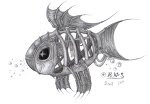This week we began by looking further into tangible design within the scenario. The lecture identified that a design that uses tangible interactions, fit's within people's life, and enhances their experiences. This forced me to again question the 'quality' of the information that was going to be communicated through our design. The first exercise during class had us filming other people ordering at a coffee shop. We then analysed the film and captured some important shots relating to the actions of the users in the video. This was done to make video cards in order to uncover user interaction needs. The following are some of the important snap shots that were taken at the coffee shop.





By analysing each of the actions in the snap shots there were a number of issues that came up. When we were waiting in line 2 other customers asked us if we had ordered yet or not. This means the lining up, paying and waiting to receive sections were not clear enough. Once we reached the counter the lady apologised for the wait. There were a number of people just waiting around, we were not to sure who's coffee we were expecting next and therefore the situation was slightly confusing. Once your coffee is ready the simply yell out what you ordered and you head to the other side of the counter to collect it. We found that this system was fairly unsuccessful as there wasn't a designated area for the coffee to be put down and then collected.
We then focussed on putting each of these actions and processors under significant headings. This is what my group came up with:
Friction
- Surrounding noise (people walking past, take away shop over the path, TV in distance)
- Communication (between customers, customer and cashier, customer and barista)
- Standards (of service, of coffee)
- Expectation (is what you receive the same every time?)
- Under pressure (can see large line of people waiting)
Routine
- Counting money (handed from customer)
- Measuring coffee (pulled out of a grinder)
- Pouring of milk (into the different jugs)
Forceful
- Banging the coffee out (must hit hard for it to fall out in one piece)
- Banging milk jug (to eliminate small bubbles)
- Yelling at other staff (during a confusion or mistake/ under stress)
- Stress (to produce the goods in a short amount of time)
Precise
- Selecting the correct button on till (cappuccino, latte, skim milk etc.)
- Calling out coffee (must be exactly what the customer ordered)
Social interaction
- Customer, barista, barista and coffee machine
- Interaction between customers (are you waiting, is that mine or yours etc)
- Uni environment (may be more relaxed then what you would find in the city)
Sustain
- Actions of people in the environment
- Cleaning (of entire shop)
Elegant
- Pouring of milk (needs to be precise)
- Presentation of staff and shop
- External view (how its perceived by the customer)
- Staff attitude (friendly and welcoming? short and rude?)
This exercise shows the we need to consider the entire scenario use of the design. Exactly how the user is going to react with the product and what they are getting out of it. Must apply a similar exercise to our concept design.. !










